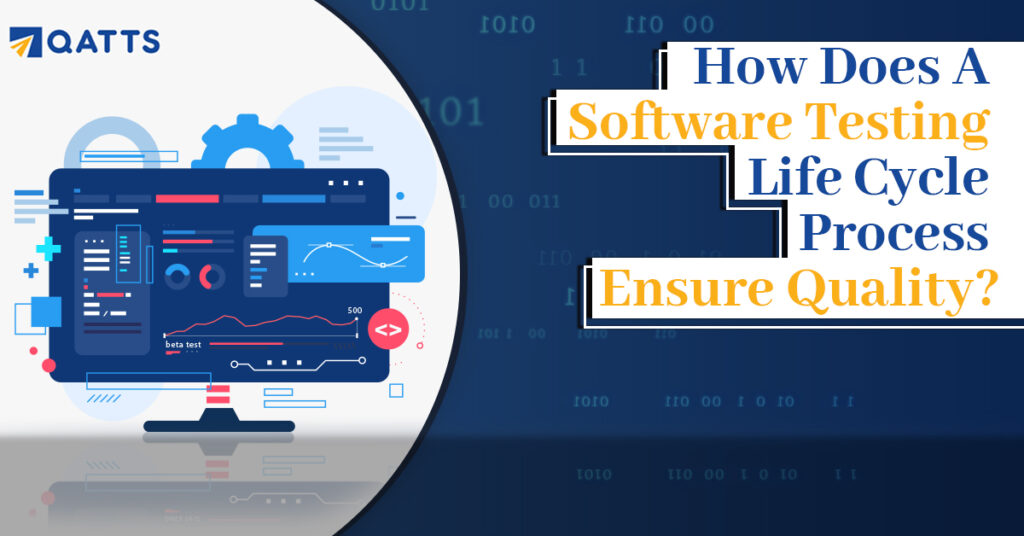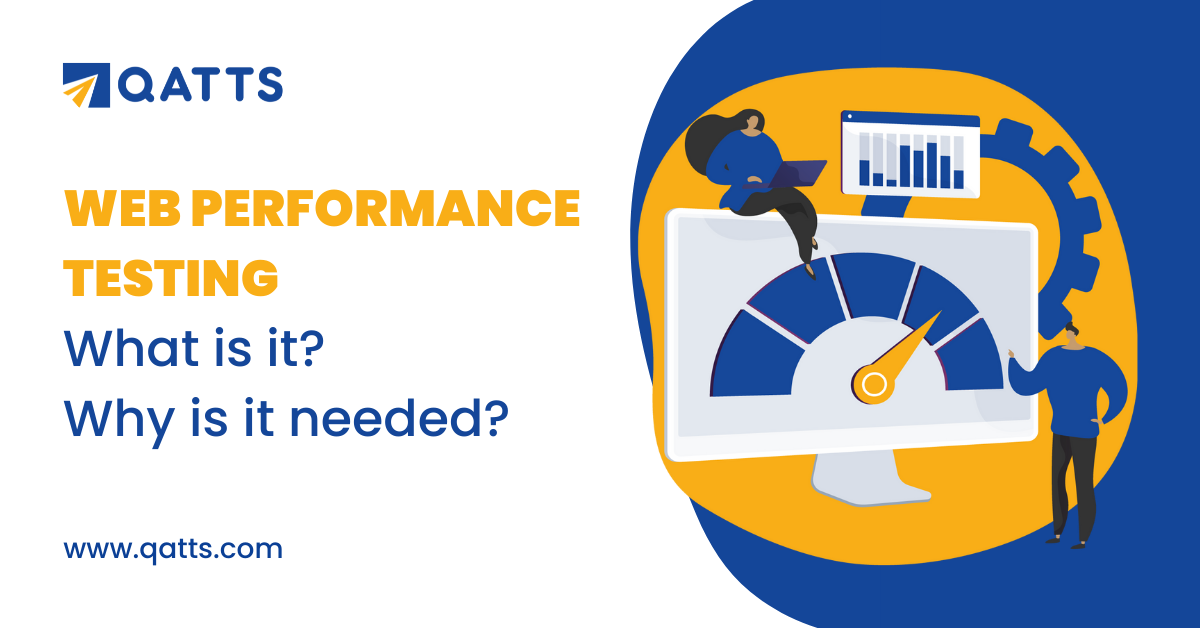
ROI of your software or product will be determined by the quality and the quality by the effective software testing
An application or software with a great user interface is not sufficient to get greater customer satisfaction and returns. For this, it needs to be tested under various conditions to identify and rectify bugs, errors, and issues before your application goes live. This is where the software Testing Life Cycle (STLC) comes into the picture. Hence, the software testing phase is a crucial step in the software development life cycle (SDLC) and it plays an important role in quality assurance.
Read on to know more about the STLC and its phases in-depth.
What is STLC?
Software Testing Life Cycle (STLC) is a set of phases taken during the testing process that ensure that software quality objectives are met. Both verification and validation are part of the STLC. Moreover, each of these phases has its own set of goals and deliverables.
Benefits of STLC:
Software testing life cycle has myriad benefits. It adds value to the software or application or product. Here are the detailed advantages of the software testing life cycle.
- Each phase aims to identify bugs, bottlenecks, and process gaps in the software or application. Also, it ensures that product development is heading in the right direction. Thus, STLC enhances the vision of your product.
- Requirements are well-analyzed so that effective test scripts can be created.
- Tests and goals will be well-defined so that the team can track the progress of the project.
- As specifications are very clear, they help the testing team during testing.
- STLC identifies and rectifies bugs and other issues before it goes live. As a result, it improves customer satisfaction.
- It vouches for effective and efficient execution. As a result, it yields reliable and high-quality software releases.
- It helps to reduce project duration.
- Project owners can better manage the project costs.
- As it saves time and money, it also helps you reap higher returns.
- In addition, the risk management report can also be used to analyze future projects properly. Also, it can be used to identify best practices to promote continuous improvement.
What are the Entry Criteria in the STLC?
Entry Criteria provides the prerequisite entities that must be completed before testing can start. Each criteria has some specific conditions that are necessary to begin a certain software testing life cycle phase. These conditions permit a task to be performed, and if any of these conditions are not met, then the task wouldn’t perform. Besides, it is important to set a time frame for those conditions to begin the procedure.
Let us take Test Case Development, one of the phases in the software testing life cycle. To begin with this phase, the following prerequisites must be met:
- Documents of Requirements.
- Test plan and RTM.
- Automation analysis reports.
What are the exit criteria in the STLC?
Exit criteria refer to the tasks that must be accomplished before testing can be finished. In other words, exit criteria for Software testing life cycle phases are items/documents/actions/tasks that must be performed before the current phase is ended and the next phase is started.
Let us take the same test case development and, to begin with, this phase, the following requirements must be met:
- Test cases/scripts must be reviewed & signed.
- Test data must be reviewed & signed.
Phases in STLC:
The following are the software testing life cycle phases. Each phase in the software testing life cycle aims to identify bugs, bottlenecks, and process gaps in the software or application to ensure that the product development is heading in the right direction.
- Requirement Analysis:
To identify the potential requirements for testing. Also, to make project estimations, budget calculations, and labor costs. - Test Planning:
Creating a test plan with the required testing tools and testing environment; participants and their responsibilities; and timing. - Test Case Development:
Using both manual and automated testing to gain maximum coverage of the software’s functionalities. - Test Environment Setup:
Setting up a test environment that comprises testing conditions, software and hardware specifications, etc. - Test Execution:
Carrying out testing based on test plans and cases. - Test Cycle Closure:
To provide feedback on any bottlenecks encountered during the software development process and to identify best practices for similar comparable projects.
STLC process with entry criteria, activity, exit criteria, and deliverables:
Let’s have a closer look at each phase of STLC with entry criteria, activity, exit criteria, and deliverables.
1. Requirement Analysis
- Entry Criteria:
- Document of Requirements for both functional and non-functional are available.
- Acceptance criteria are defined.
- An application architectural document is available|.
- Activity:
- Analyzing the business functionality to understand the business modules and their specific functionalities.
- Identifying all transactions in the modules.
- Identifying all the user profiles.
- Gathering requirements such as UI/authentication and geographic spread.
- Identifying types of tests to be executed.
- Collecting details about testing priorities.
- Preparing Requirement Traceability Matrix (RTM).
- Identifying test environment details where testing will take place
- Analyzing Automation feasibility if required.
- Exit Criteria:
- RTM is signed off.
- Test automation feasibility report is signed off by the client.
- Deliverables:
- It includes RTM and Automation feasibility reports.
- It includes RTM and Automation feasibility reports.
2. Test Planning
- Entry Criteria:
- Documents of Requirements.
- RTM (Requirement Traceability Matrix).
- Document of Test automation feasibility.
- Activity:
- Analyzing various available testing approaches
- Finalizing the right approach
- Preparation of test plan/test strategy document for all types of testing.
- Selection of the right testing tool.
- Estimation of Test effort.
- Resourcing planning.
- Determining roles and responsibilities.
- Exit Criteria:
- Documents of test plan/test strategy are approved.
- The effort estimation document is signed off.
- Deliverables:
- Test plan/strategy and effort estimation document.
3. Test case development
- Entry Criteria:
- Documents of requirements.
- Test plan and RTM.
- Automation analysis reports.
- Activity:
- Creating test designs, test cases, and automation scripts
- Reviewing baseline test cases & test scripts
- Creating test data
- Exit criteria
- Reviewed & signed test scripts/cases.
- Reviewed & signed test data.
- Deliverables:
- Test cases/scripts and
- Test data.
4. Test Environment setup
- Entry Criteria:
- System Design and architecture documents are available.
- The environment set-up plan is available
- Activity:
- Identify the required architecture for the environment set-up.
- Creating a list of requirements for hardware and software development.
- Finalizing connectivity requirements
- preparing the checklist for environment setup.
- Setup the test environment and test data.
- Perform a smoke test on the building.
- Accept/reject the building depending on the smoke test results.
- Exit Criteria
- The environment setup is working according to the plan and checklist.
- Test data setup is complete.
- The smoke test is successful
- Deliverables
- The test environment is ready with test data set up and
- Results of the Smoke Test.
5. Test Execution
- Entry Criteria:
- The test environment is ready with test data set up and
- Results of the smoke test
- Availability of test plan, test scripts/cases and baselined RTM.
- Availability of a unit test or integration test report for the build to be tested.
- The test environment and test data setup are ready.
- Activity:
- Execution of tests as per test plan.
- Documentation of test results and log defects for failed test cases.
- Updating or modifying test plans or test cases (whenever required).
- Mapping defects to test cases in RTM.
- Retesting the defect fixes.
- Performing regression testing for the application.
- Tracking the defects to test closure.
- Exit Criteria:
- All planned tests are executed.
- All defects are logged and tracked to closure.
- Deliverables:
- Completed Requirements Traceability Matrix (RTM) with execution status.
- All test cases are updated with results.
- Defect reports.
6. Test Cycle Closure
- Entry Criteria:
- Completion of testing.
- Availability of test results and defect logs.
- Activity:
- Completion of testing.
- Availability of test results and defect logs.
- Evaluation of cycle completion criteria based on Critical Business Objectives, Software Quality, Test Coverage, Time, and Cost.
- Preparation of test metrics based on the aforementioned parameters.
- Documentation of learning from the project.
- Preparation of Test closure report.
- Reporting to the client on the quality of the work output in both qualitative and quantitative terms.
- Analyzing test results to identify bugs distribution by kind and severity.
- Exit Criteria
- The test closure report is signed off by the client.
- Deliverables:
- It includes Test metrics and Test Closure reports.
Differences between SDLC & STLC:
Although both the STLC & SDLC appear to be similar, they differ in their goals and objectives. Read on to know the SDLC and STLC differences that are tabulated as follows.
| S.No. | SDLC | STLC |
| 1 | The acronym for SDLC is Software Development Life Cycle. | The acronym for STLC is Software Testing Life Cycle. |
| 2 | It is related to software development. | It is related to software testing. And it is a subset of SDLC. |
| 3 | Its primary purpose is to gather customer requirements and design products that meet those needs. | Its primary purpose is to create tests that adapt to the requirements and verify that the features fulfil those criteria. |
| 4 | It aims to provide high-quality software after successful software development. | It aims to complete effective software testing activities and provide bug-free software. |
| 5 | The SDLC phases include: Requirement GatheringAnalysisDesignCodingTestingDeployment | The STLC phases include: Requirement AnalysisTest PlanningTest DesignEnvironment SetupTest ExecutionTest ClosureThese STLC phases are performed after SDLC Phases. |
| 6 | It must complete both entry and exit criteria before entering/leaving each phase. | It also must complete both entry and exit criteria before entering/leaving each phase. |
| 7 | Good cooperation and coordination from all stakeholders such as Product Owners, Business Analysts, Developers, DevOps, and QA are required to get accurate results and quality releases. | Good cooperation and coordination from all stakeholders such as Product Owners, Business Analysts, Developers, DevOps, and QA are required to get accurate results and quality releases. |
Role of STLC in SDLC:
STLC is a part of SDLC. Both STLC & SDLC are used to serve a similar purpose but they work on different tasks with the same goal.
Let me brief it with the steps involved in both SDLC & STLC for the same purpose: achieving the highest quality at both the verification & validation stages and maximum client satisfaction.
- For SDLC: a collection of requirements and designing of the declared functionality.
- For STLC: Requirement analysis, assistance to the development team and client, and ensuring that the delivered functionality is of high quality.
Conclusion:
In a nutshell, the software testing life cycle (STLC) is an indispensable part of SDLC that ensures accuracy, quality, and robustness. Hope, you get the maximum knowledge of the STLC process and how each STLC phase goes hand-in-hand to ensure application or software quality.
Hesitate not to write or reach out to us if you
- want to know more about software and automation testing.
- are in search of a reliable software testing company that meets your testing needs.
- require any assistance in manual testing and test automation.


